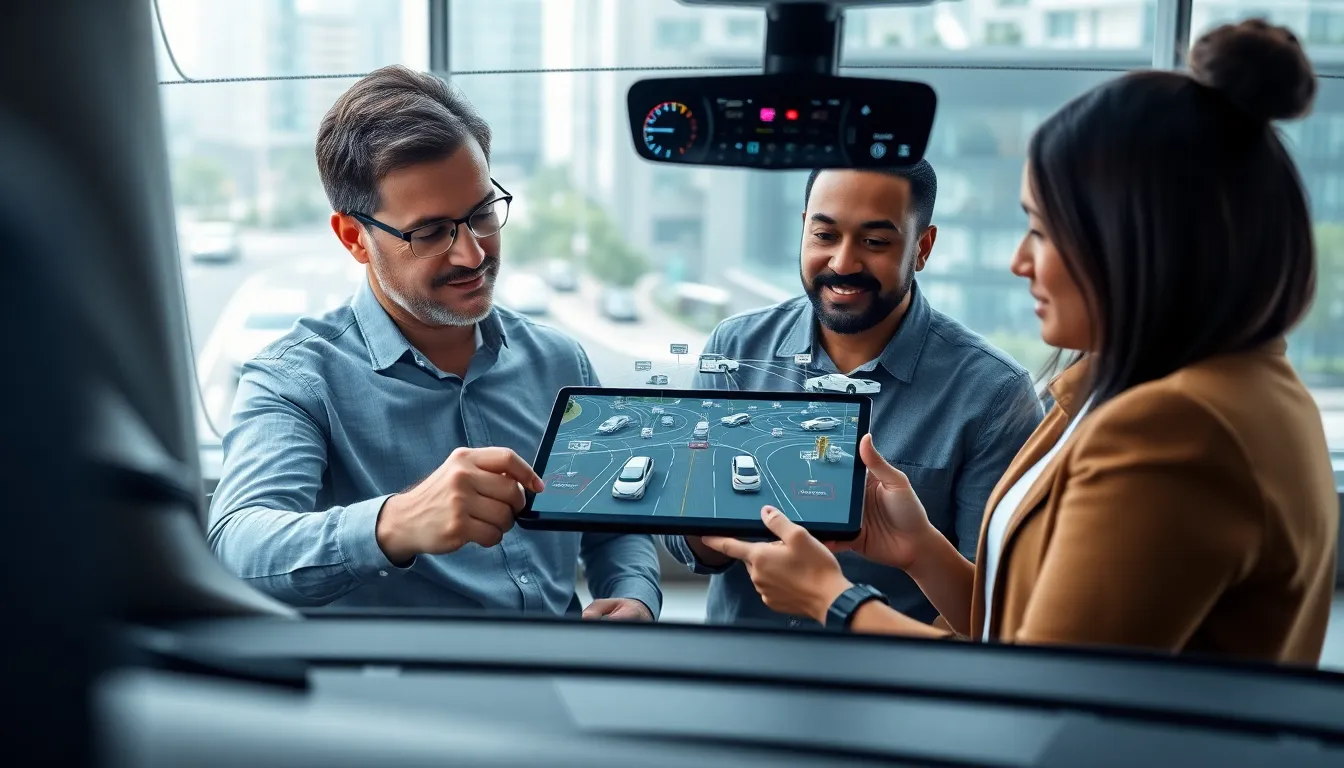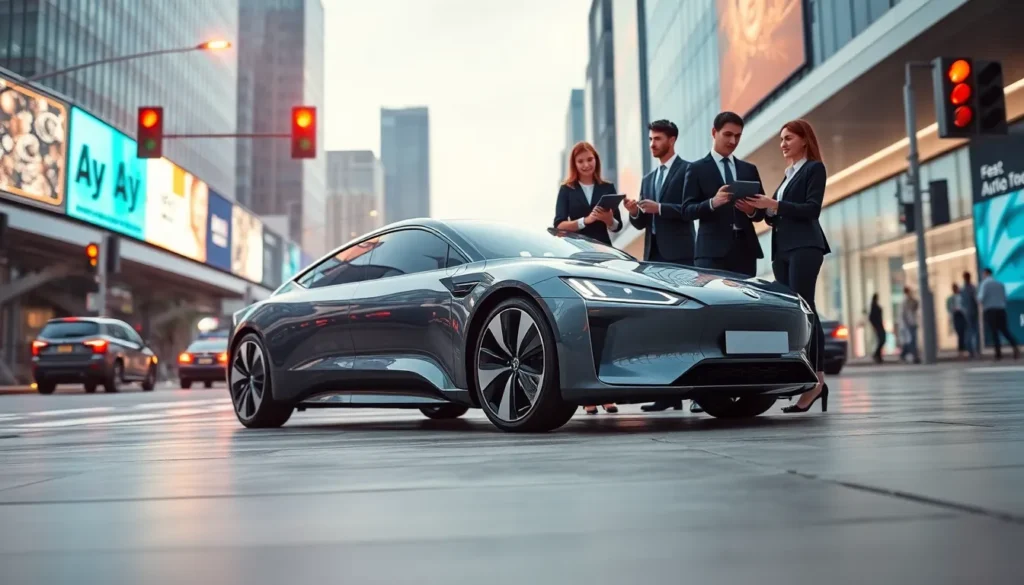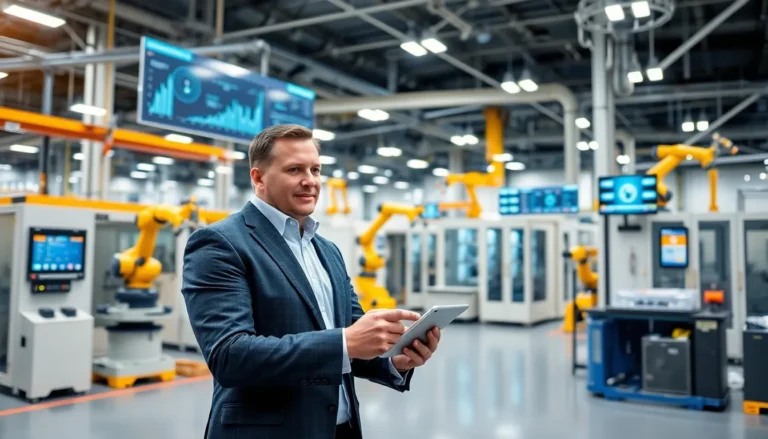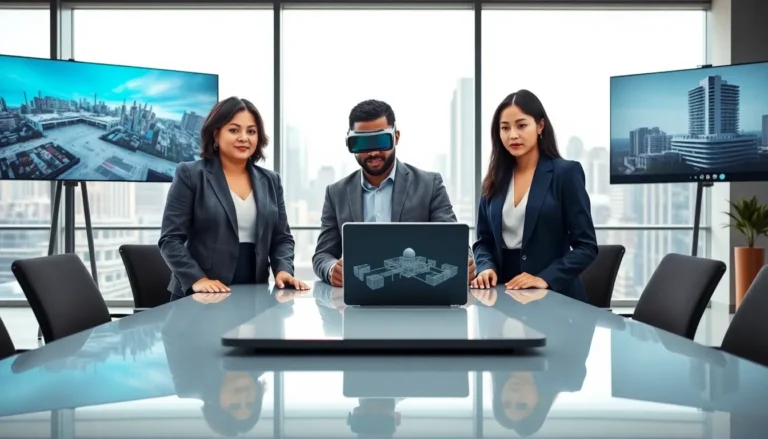The automotive world is experiencing a seismic shift, thanks to the Internet of Things (IoT). Picture this: cars that can communicate with each other and the roads, enhancing safety and making driving more delightful. And yes, your vehicle might even start talking back. Ever wondered how this high-tech magic works and what it means for your daily commute? Buckle up as we jump into the thrilling realm of IoT in the automotive sector, exploring its technologies, advantages, and challenges with a wink and a nod.
Table of Contents
ToggleUnderstanding The Internet Of Things

The Internet of Things encompasses a vast network of interconnected smart devices, all collecting and sharing data. In the automotive sector, IoT allows vehicles to communicate not just with each other but with infrastructure, such as traffic lights and parking systems, creating a more efficient transportation ecosystem. Imagine a world where your car knows the best routes to avoid traffic jams and can even find a parking spot on its own, this isn’t science fiction: it’s today’s reality. The core idea is simple: devices talk, analyze data, and so make real-time decisions. For drivers, it translates to smarter, safer driving experiences.
Key Technologies Driving IoT in Automotive
Several cutting-edge technologies are propelling IoT into the fast lane of automotive innovation. At the heart of this transformation are:
- Sensors and Cameras: Vehicles are now outfitted with multiple sensors that gather information about their surroundings. Whether it’s detecting obstacles or monitoring tire pressure, these sensors provide critical data to enhance safety.
- Cloud Computing: By leveraging the power of the cloud, cars can store and process vast amounts of data, helping manufacturers upgrade features remotely and reduce the need for costly recalls.
- Artificial Intelligence (AI): AI algorithms sift through data collected from vehicles, enabling predictive maintenance and driving assistance features, like adaptive cruise control and emergency braking.
- Connectivity Standards: Technologies like 5G are enhancing vehicle connectivity, allowing data to be transmitted at lightning speeds. This facilitates real-time communication between vehicles, infrastructure, and even pedestrians.
These technologies are forming the backbone of an intelligent driving ecosystem, seamlessly integrating the digital with the physical.
Impact Of IoT on Vehicle Safety
Vehicle safety is one of the most significant areas where IoT has demonstrated its value. With real-time data sharing, cars can alert each other about road conditions, accidents, or construction zones. An example? If one vehicle slams on the brakes, nearby vehicles can be warned instantaneously, reducing the risk of pile-ups.
Also, advanced driver-assistance systems (ADAS) are becoming commonplace, relying on IoT technology to enhance functions like lane-keeping, collision avoidance, and adaptive lighting. Some systems will even learn driving habits over time, allowing for even safer interactions on the road. IoT-enabled safety features aren’t just beneficial, they can be lifesaving.
Enhancing Driver Experience Through IoT
The perks of IoT aren’t just limited to safety, drivers are also reaping substantial benefits in their everyday experience. Consider:
- Personalized Driving Experience: Drivers can customize their vehicles, from seat positions to climate controls, automatically adjusted based on their preferences.
- Predictive Maintenance: No one enjoys unexpected breakdowns. IoT technologies can predict when a vehicle is due for maintenance, notifying the owner before minor issues escalate into costly repairs.
- Infotainment Systems: IoT makes it possible to integrate smartphones with vehicle systems for seamless navigation, real-time traffic updates, and access to music or media on-the-go.
- Remote Features: Ever left your car doors open or forgotten if you locked them? Many vehicles allow owners to control features remotely, such as locking doors, starting the engine, or finding the vehicle in a crowded parking lot.
With these enhancements, driving has never been more convenient or enjoyable.
Challenges and Concerns in IoT Automotive Integration
Even though its many advantages, IoT in the automotive sector faces several hurdles. For starters:
- Cybersecurity: As vehicles become more connected, the threat of cyberattacks increases. Hackers could potentially gain control over systems, making robust security protocols essential.
- Data Privacy: With cars collecting vast amounts of data, there are concerns about who owns this data and how it will be used. Ensuring user privacy while utilizing this data for advancements poses a significant challenge.
- Standardization: With numerous manufacturers and varying technologies, a lack of universal standards hinders interoperability between different systems and devices.
- Infrastructure: Many existing road infrastructures are not equipped to support the extensive data exchange needed for IoT solutions. Upgrading these systems will require significant investments and time.
The Future Of IoT in the Automotive Industry
As we look forward to the future of IoT in the automotive industry, the possibilities seem limitless. The dream of fully autonomous vehicles is inching closer, fueled by ongoing advancements in IoT technology. Imagine cars that not only drive for you but also communicate with each other to optimize traffic flows in real-time. The integration of smart cities with IoT will create a cohesive ecosystem where vehicles, roads, and infrastructure work harmoniously. Expect increased collaborations between automotive manufacturers and tech giants, leading to smarter, safer, and more efficient vehicles. The road ahead is undoubtedly exciting and will redefine how we think about transportation.










